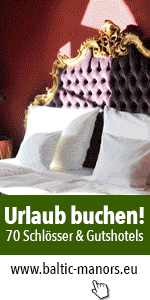Deutsche Website
A manor house for a whole group!

The guest house Zietlitz offers the suitable ambience for family celebrations, small seminars, groups of friends of historical manor houses; nature lovers, yoga groups and much more.
Manor House Levetzow
Levetzow, also mentioned as Levezow, is the name of an old Mecklenburg noble family. First mentioned in a document on June 18th, 1262, the dynasty was the owner of the property for at least 180 years and gave its name to the village which is located amidst an original end moraine landscape just a few kilometres away from the coastal town of Wismar.
Thus, first a "...dominus Elerus de Lewetzow...", subsequently Günter von Levetzow (1283), then Günter II von Levetzow (1313), Henneke von Levetzow (1346), later Swenneke von Levetzow (1349) and finally Hans von Levetzow (1388) are mentioned in legal transactions.
According to a fief letter of September 29th, 1443 Johann von Bassewitz became the owner "...of the estate and village..." by marrying his second wife, an heiress née von Levetzow, and founded the more than 200-year history of the von Bassewitz family on this feudal manor. This widely branched out and many times wealthy family association was in possession of many properties with numerous estates, among others in the southern area of Wismar. Levetzow became one of their ancestral homes; some of the owners were Lüdecke von Bassewitz (1455), Lüdecke von Bassewitz (1469), Heinrich Vicke von Bassewitz (1486), Johann von Bassewitz (1514), Joachim I von Bassewitz (1523), Joachim II von Bassewitz (1560), Heinrich Matthias von Bassewitz (1620).
In the following century, the owners changed frequently. In 1656, Matthias Vollrath von Gühlen purchased the 342-hectare estate along with three virgata of land in Kritzow and four virgata in Hohen Viecheln and kept it in the family for three generations. From 1714 to 1788, members of the noble families of von Schack (Claus Christoph, 1714), von Scheelen (Bernhard Christoph, 1748), von Gühlen (Johann Heinrich, 1762) and von Gütschow (Christian Diederich, 1763) appeared as owners, until finally the bourgeois Johann Ludewig Diederich Bade purchased the estate and signed the feudal charter on 23 October 1788. Levetzow now remained in possession of the Bade family for several generations.
In 1804 Elert August Bade built today's manor house (left part of the building) largely on the foundations of the previous building. By purchase it comes to Paul Friedrich Christian Seeler on May 10th in 1875, he already appeared as the tenant of the estate for the four preceding years. During the following year of 1876 he had the transept (right part of the building) added and had the entire cubage redesigned in neo-Gothic style by the architect Heinrich Thormann. In 1908 Paul Seeler´s son Carl Heinrich Friedrich Emil Paul Seeler took over the estate. In 1925, he had to submit the declaration of assets and so Dr. Walter Olischläger came into possession of the property from the auction in 1926. His son Hans Ohlischläger successfully runs the estate until the expropriation after the end of WWII. At the end of the 1930s, numerous farm buildings were rebuilt, of which three and a small estate manager´s house have been preserved. Nowadays, after reconstruction and extension, these are used as residential buildings.
The manor house Levetzow, a two-storey building on a T-shaped ground with a high boulder base and Gothic lancet windows in the attic gables, shares its fate with many similar manor complexes after 1945. The land of the estate was divided up; the manor house served as accommodation for refugees from 1946 onwards. Later the house is briefly used as a boarding school for the training of new teachers and then housed a co-op shop, a community hall, and some flats. Despite structural decline, the neo-Gothic appearance with four stepped gables, a 3/6th bay window with Gothic pointed arch niches, the staircase and gallery in the vestibule, spatial structures such as the Small Garden Hall, several floor coverings and the barrel vaulting of the cellars from the second half of the 19th century have been preserved. In the vestibule, which extends over two floors, the staircase and gallery as well as room structures such as the garden hall, several floor planks and the massive vaults of the cellars bear witness to the building activity in the second half of the 19th century. Both entrance portals are modern and have been recreated.
In 2011, a private owner purchased the house and some consolidation areas of land and began with the careful renovation. In 2019 the manor house is inhabited by this owner, a granite-stone paved driveway and a roundabout create a historical grandly atmosphere to the bright white building with entrance portal; landscape conservation measures are slowly taking effect in the former park. The renovation process will continue for several more years and will eventually allow a mixed use of the manor house with some holiday apartments, premises of limited public use and the letting of commercial units with a representative character.








